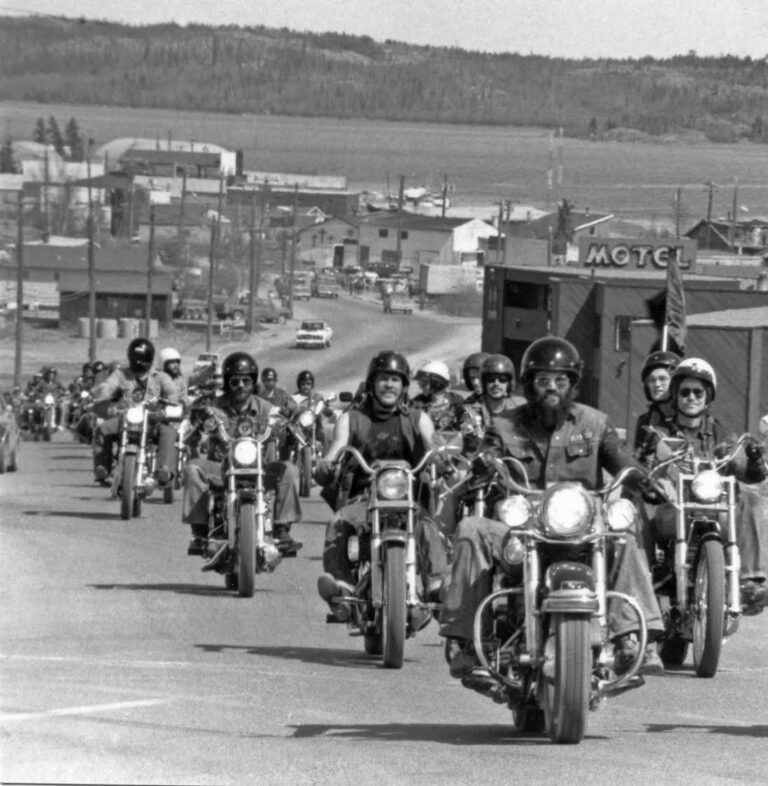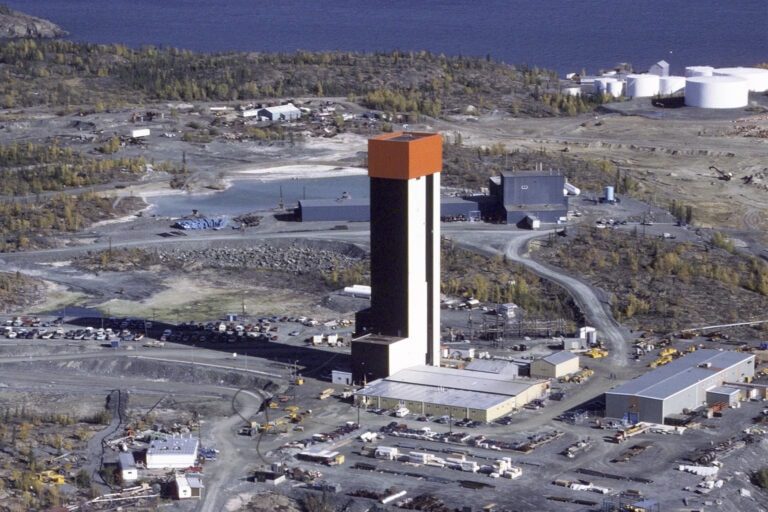Gold-seeking attention turned to the volcanic belt on Yellowknife Bay’s western shore in 1936. By breakup, it was staked near solid. Burwash Mine employees were responsible for many of these claims, including Thomas Payne, the prospector that sustained Yellowknife’s reputation as a gold rush region.
Every story of a new mining camp has a character like Tom Payne. Downtrodden, destitute, starving… this was Payne in the winter of 1935-1936. You wouldn’t expect such a sorry state with a chap from Essex, son of a wealthy doctor. But from an early age, Payne knew he was on a different path than his father. Fixing machines, not humans, was his passion. This was proved at private school when the rebellious teenager restarted an abandoned steam locomotive, sending it rolling off the track. A man of his energy and skills could not be tied down and in 1912, Tom Payne was bound for the Canadian West.
Payne spoke vehemently for his liberties and refused to hand over the deed, and so Burwash barred him from the camp kitchen as punishment.
A diversity of jobs followed: threshing wheat fields in the Prairies, construction at the base metal mines of Manitoba and driving winter convoys to Hudson’s Bay. In the 1930s Payne set his sights on the north country and signed on with freight operators Pat and Mickey Ryan on the Slave River portage at Fort Smith. He developed a great friendship with the brothers and they would often send money to support his prospecting exploits.
In 1935, Payne got a job at Major Burwash’s gold mine on Yellowknife Bay as a mechanic and spent his free hours prospecting. But by the Major’s decree, employees couldn’t stake and record claims for themselves, and whatever was found belonged to his company. Payne spoke vehemently for his liberties and refused to hand over the deed, and so Burwash barred him from the camp kitchen as punishment. For a time, he was desperately living in a dugout below a rotted tree stump and collecting food scraps. He staked more claims with the support of the Ryan Brothers and then retreated to Fort Smith for the winter to nurse his pride.
Returning in 1936, Payne found Cominco’s crew camped in a small draw on Yellowknife Bay working on its ‘Con’ claims where gold was found in a series of quartz veins. From here, a trail wound its way west to the vein workings, across land not actually claimed by Cominco. This claim had been staked on a practical whim by Murdoch Mosher back in 1934 following Johnny Baker’s original gold discovery, but never seriously investigated. Mosher’s claim covered all of today’s Tin Can Hill and the shore opposite the island named in his memory.
On Payne’s first hike over the trail, he spotted an interesting formation. Tracing it, he grabbed some samples and panned the material down on the lakeshore. Specks of gold shined through the water. Payne was dumbfounded. How had nobody spotted a gold vein on a trail used everyday? He covered the vein with leaves and branches and wrote to the Mining Recorder’s Office in Fort Smith to ask about the legal tenure to that area.
Luckily for Payne, Mosher’s claim was due to lapse at the stroke of midnight, August 17, 1936, and so he hatched an elaborate plan to restake. It was a once in a lifetime opportunity. Other men were also aware of the lapsing claim and Payne was starting to feel the pressure. In the game of prospecting, you never really know who to trust. Fortunes can be lost with the leaking of secrets and the betrayal of those around you. But Payne knew this was a job for two men. He needed a partner and so enlisted the help of a young Gordon Latham, an employee at Yellowknife’s first place of business, the Corona Inn. Latham was a rookie to the area and knew little about gold or the prospecting business, so Payne felt he was trustworthy. Besides, all he needed was a healthy young man to help him set up the posts, which he had pre-cut and stashed in the bush. Pre-planning the whole operation had given him the upper hand.
Late on the night of the 16th, the two crept through the bush on the west side of the Bay to their strategic locations. At the stroke of midnight Payne fired a shotgun blast to signal Latham, and off they went like race horses, darting over the outcrops and through the thickets erecting the important posts. Within an hour, the last post was in place and the ‘P&G’ claims were official. It was over before the other prospectors had even landed their canoes.
Then the real work began to prove a gold mine. Pat and Mickey Ryan put up more capital. Payne and a Dene boy trenched and sacked about two tons of ore assaying over 20 ounces of gold per ton. Ryan Gold Mines Ltd. was incorporated and share offerings were made to the public. Payne promoted the company on Edmonton streets, flashing gold nuggets from his trouser pockets like spare change. His enthusiasm was contagious and investors, which included many of the characters Payne had met in his northern adventures, lined up for a piece of the action.
Tom Payne, no longer starving and destitute, in later years | NWT Heritage Mining Society
Gold veins found on Tom Payne’s claims were traced south onto the ‘Negus’ claims and a Toronto group optioned a right to explore the property. To the north, Bear Exploration and Radium had begun work on Johnny Baker’s ‘Giant’ claims where a number of small high-grade veins were discovered. Meanwhile, at the ‘Con’ claims, Cominco proved up a rich gold deposit by drilling and shaft sinking in 1936-1937. The results were enough for William Archibald, a Cominco senior director who recommended, based solely on preliminary diamond drill assays, that a mill be installed as soon as possible. It was unheard of to base such a major decision on the bare minimum of exploration, especially in an unproven geological district.
William Archibald then caught wind of the important ‘P&G’ claims right next door to Con and immediately made an offer to buy Payne and his associates out. If the claims were as rich as said, then adding this tonnage to the Con reserve could justify his decision to start a mine. Payne gave his terms: $500,000 cash plus a 40 percent interest in production royalties. The deal was signed in September 1937. A new jointly-owned company was created to reap the rewards from the ‘P&G’ claims – Rycon Mines Limited. For Tom Payne and his partners, it was a fantastic deal.
The Yellowknife gold boom was about to enter full swing. By 1938 several shafts were sunk on rich gold-bearing veins, hundreds of men were at work building permanent camps and installing industrial machinery and a community on the shores of Yellowknife Bay was coming together. It was a far cry from only three years earlier when the only sign of activity was a log cabin camp and a small shaft on the hill above Burwash Point, where a half dozen miners hopelessly picked away at a narrow quartz vein. Now, the future of gold mining rested in the ancient volcanic rocks lining the west side of Yellowknife Bay, where a boom town was just getting started.
To be continued….







